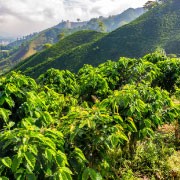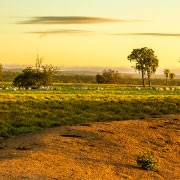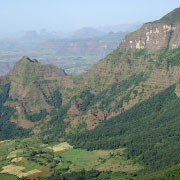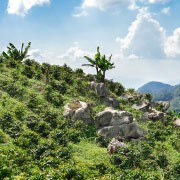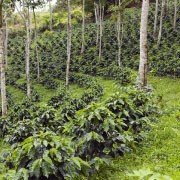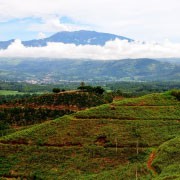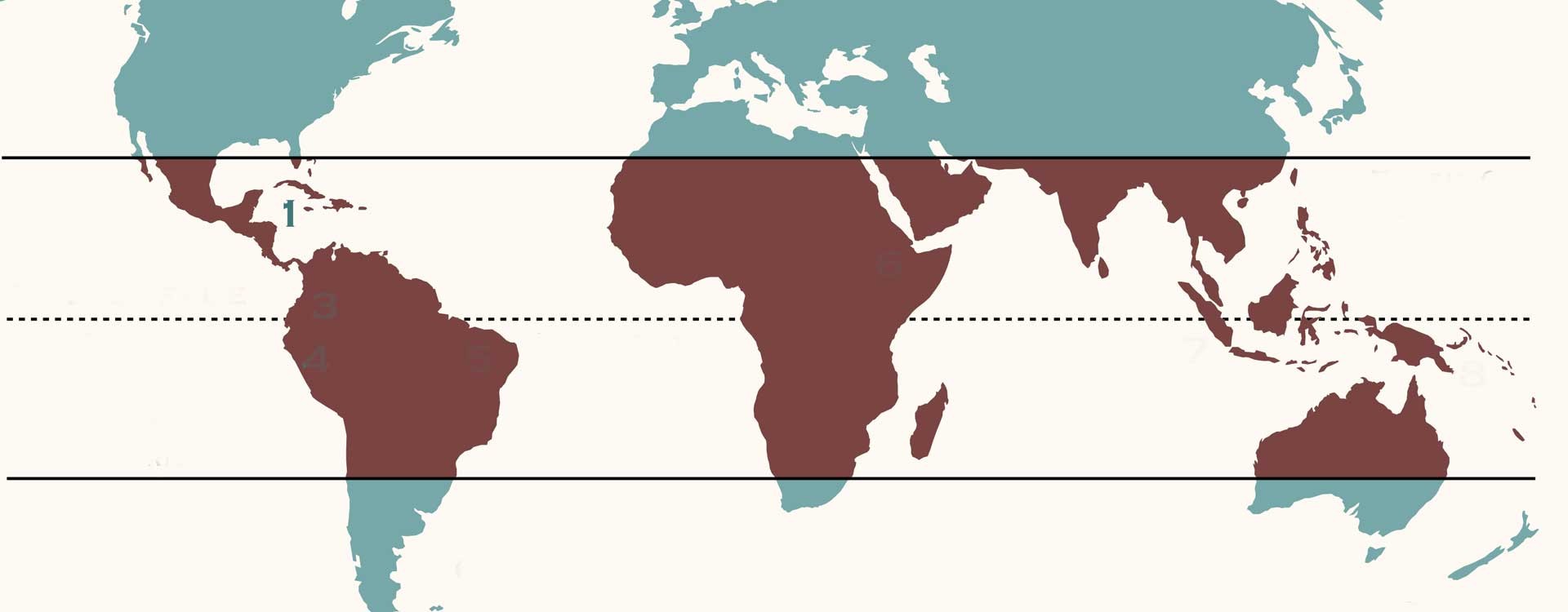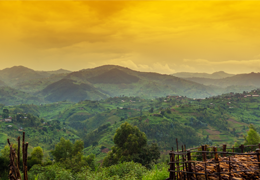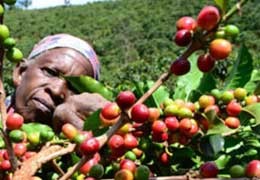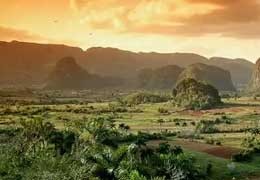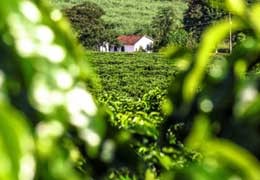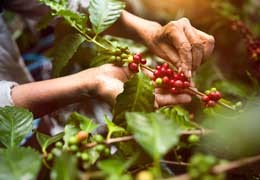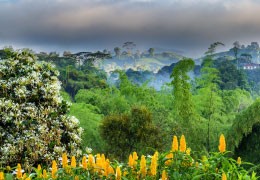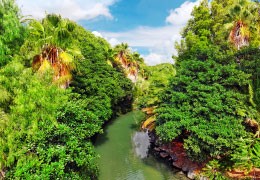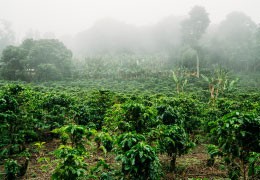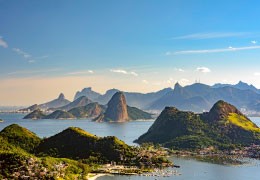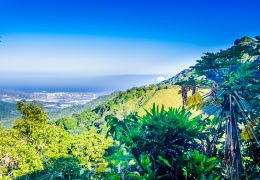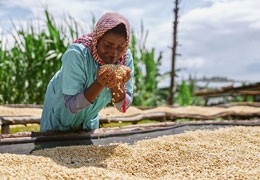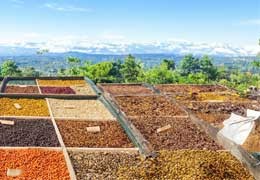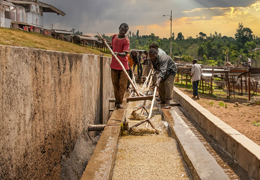World of Coffee: Discovering Culture and Flavors
Freshly roasted coffee is not just a stimulating beverage, but also a culture and art of exploring flavors. Coffee enthusiasts appreciate the opportunity to explore coffees from different regions and discover the characteristic flavor notes unique to each coffee. In this coffee blog category, we will take a closer look at the most important coffee-growing regions and countries in the world to better understand this fascinating culture.
Coffee Belt: The Heart of Coffee Production
There are six main coffee-growing regions in the world: Africa, Asia, Oceania, Central America, and South America. All these regions are located along the equator, between the Tropic of Cancer and the Tropic of Capricorn, widely known as the "Coffee Belt." The tropical and subtropical climates in the Coffee Belt, along with the abundance of growing regions at elevations of 200-2,200 meters above sea level, provide ideal conditions for coffee cultivation.
Coffee Cultivation in Africa
Ethiopia - Ethiopia is the birthplace of coffee and one of the most important coffee-producing countries in Africa. Ethiopian coffee is predominantly high-quality arabica, grown at elevations ranging from 1,500 to 2,200 meters above sea level. Ethiopian coffee is renowned for its exceptional and diverse flavors, with notes of fruits, flowers, spices, and bergamot. The main growing regions include Sidamo, Yirgacheffee, Harar, and Kaffa.
Kenya - Kenya is a well-known coffee producer in Africa, with plantations concentrated on the slopes of Mount Kenya. Kenya primarily cultivates arabica coffee, characterized by intense flavors, high acidity, and rich notes of fruits, flowers, and spices. The main growing regions include Kirinyaga, Nyeri, Kiambu, and Meru.
Tanzania - Tanzania also significantly contributes to African coffee production. The country mainly cultivates arabica coffee at elevations ranging from 1,000 to 2,000 meters above sea level. Tanzanian coffee is known for its balanced body, moderate acidity, and flavor notes of fruits, chocolate, and spices. The main growing regions include Kilimanjaro, Arusha, Mbeya, and Kigoma.
Rwanda and Burundi - Rwanda and Burundi are smaller African countries that also produce significant amounts of arabica coffee. Coffee from these countries is highly regarded for its delicate and complex flavors with notes of flowers, citrus, fruits, and tea. The main growing regions include Kivu, Gitega, and Ngozi.
Uganda - Uganda is another important coffee producer in Africa. The country cultivates both arabica and robusta coffee. Ugandan coffee is characterized by a full body, low acidity, and flavor notes of chocolate, spices, and nuts. The main growing regions include Bugisu, Sebei, and Ankole.
Africa is a significant coffee production region worldwide. Thanks to its climate, soil, and diversity of growing regions, Africa provides an incredibly diverse range of coffee flavors and aromas that are popular around the globe.
Coffee Cultivation in Asia
Indonesia - Indonesia is one of the largest coffee producers in the world and a key player in Asia. The country cultivates both arabica and robusta coffee. Indonesian coffee is known for its full body, low acidity, and earthy, spicy, and chocolatey flavor notes. The main growing regions include Sumatra, Java, Sulawesi, and Bali.
Vietnam - Vietnam is the second-largest coffee producer globally and a dominant producer of robusta coffee. Vietnamese coffee is characterized by its intense flavor, full body, low acidity, and notes of chocolate, nuts, and spices. The main growing regions include the Central Highlands, Lâm Đồng, and Đắk Lắk.
India - India is another significant coffee producer in Asia. The country cultivates both arabica and robusta coffee. Indian coffee is characterized by a moderate body, balanced acidity, and notes of spices, nuts, and chocolate. The main growing regions include Karnataka, Kerala, and Tamil Nadu.
China - China has started coffee cultivation on a larger scale relatively recently but has already gained recognition as a producer of high-quality arabica coffee. Chinese coffee is highly regarded for its delicate and complex flavors with notes of flowers, fruits, and tea. The main growing regions include Yunnan, Hainan, and Fujian.
Philippines - The Philippines cultivates both arabica and robusta coffee, as well as local varieties such as Barako. Philippine coffee is characterized by a balanced body, moderate acidity, and flavor notes of fruits, chocolate, and spices. The main growing regions include Luzon, Mindanao, and Visayas.
Thailand - Thailand primarily cultivates arabica coffee, particularly in the northern part of the country. Thai coffee is valued for its complex flavors with notes of fruits, flowers, and spices, as well as for its ethical and sustainable farming practices. The main growing regions include Chiang Mai, Chiang Rai, and Nan.
Asia plays a significant role in global coffee production due to its diversity of growing regions, coffee species, and unique flavor profiles. Both arabica and robusta coffee are cultivated in Asia, catering to different markets and segments. Coffee-producing Asian countries increasingly focus on quality, sustainable development, and ethical farming practices, which contribute to the popularity of their products worldwide.
Collaboration between Asian countries, international organizations, and local farming communities contributes to the development of the coffee sector in Asia. As the demand for high-quality coffee grows, coffee-growing regions in Asia are investing in training, technology, and infrastructure to improve the quality and sustainability of their production.
In the future, Asia's role in global coffee production may further increase, especially considering changing climatic conditions and the growing demand for high-quality coffee. Innovative farming practices, adaptation to climate change, and a commitment to sustainable development will be crucial for the future of the coffee sector on this continent.
Coffee Cultivation in Oceania
Although Oceania is not as well-known for coffee production as other continents, coffee cultivation in this region is gaining importance. Pacific islands such as Papua New Guinea, Vanuatu, Fiji, and Hawaii contribute to global coffee production, offering unique flavors and exceptional quality beans.
Papua New Guinea - Papua New Guinea is one of the major coffee producers in Oceania. The country mainly cultivates arabica coffee, although some robusta coffee plantations can also be found. Coffee from Papua New Guinea is characterized by a rich, full-bodied taste, sweet fruity notes, and low acidity.
Vanuatu - Vanuatu is an island nation in Oceania that primarily produces robusta coffee. Vanuatu coffee is known for its distinctive earthy flavor and intense aroma. Coffee cultivation in Vanuatu takes place at elevations ranging from 400 to 800 meters above sea level, which influences the quality and flavor of the produced beans.
Fiji - Fiji, known primarily as a tropical tourist destination, also produces coffee. Fiji cultivates mainly arabica coffee, which is characterized by a mild taste, sweet fruity notes, and delicate acidity. Coffee cultivation in Fiji is expanding at elevations above 400 meters above sea level.
Hawaii - In the United States, coffee is also grown on the islands of Hawaii. Hawaiian coffee, especially from the Kona region, has gained worldwide recognition for its high quality, intense flavor, and unique fruity and chocolaty notes. Coffee cultivation in Hawaii takes place at elevations ranging from 300 to 900 meters above sea level, contributing to the quality of the produced beans.
As consumer awareness of coffee flavor diversity grows, coffees from Oceania are also gaining recognition in the global market. In the future, the role of Oceania in coffee production may continue to increase, especially in the context of sustainable development and the improvement of the quality of coffees grown in this region.
As consumers become more interested in sustainable coffee production, Oceania countries can gain a competitive advantage through their cultivation practices. Many plantations in this region employ environmentally friendly methods, focusing on environmental stewardship and proper water resource management. Furthermore, there is a commitment to supporting local communities and small-scale farmers, promoting fair trade and direct collaboration with farmers.
The improvement of coffee quality in Oceania is related to investments in education, scientific research, and the development of new technologies. Many countries in the Oceania region are introducing innovations in cultivation methods, harvesting, and coffee processing, resulting in unique flavors and aromas in the offered beans. The growth of coffee quality in Oceania may make the region even more competitive in the global market.
As a result, the role of Oceania in global coffee production has the potential to grow, especially considering the increasing demand for high-quality, sustainable, and ethically produced products. As consumers place more value on the origin and values behind the coffee they drink, Oceania countries can leverage their uniqueness and commitment to sustainable development to gain a larger share of the global coffee market.
Coffee Cultivation in Mexico and Central America
Mexico and the countries of Central America, such as Guatemala, Honduras, Costa Rica, Nicaragua, El Salvador, and Panama, are known for their high-quality coffee. This region is characterized by favorable climate, high altitudes, and fertile soils that are conducive to coffee cultivation. Arabica coffee is particularly popular, although robusta cultivation can also be found.
Mexico - Mexico primarily cultivates arabica coffee, which grows at elevations ranging from 900 to 1800 meters above sea level. The most well-known coffee-growing regions include Chiapas, Veracruz, and Nayarit. Mexican coffee is characterized by a moderate body, high acidity, and notes of chocolate, nuts, and fruits.
Guatemala - Guatemalan coffee is known for its complexity, exceptional balance between sweetness and acidity, and rich flavor with notes of fruits, chocolate, and spices. The most renowned growing regions include Antigua, Huehuetenango, and Atitlán. Arabica coffee beans are cultivated at elevations ranging from 1300 to 2000 meters above sea level.
Honduras - In Honduras, arabica coffee grows at elevations ranging from 900 to 1600 meters above sea level. Honduran coffee is gaining popularity due to its unique flavors, including tropical fruit, floral, and chocolate notes. Important growing regions include Copán, Montecillos, and Opalaca.
Costa Rica - Costa Rican arabica coffee grows at elevations ranging from 1200 to 1700 meters above sea level. Coffee from Costa Rica is known for its refined taste, intense acidity, and notes of fruits, flowers, and caramel. The most famous growing regions include Tarrazú, Central Valley, and West Valley.
Nicaragua - Nicaragua primarily cultivates arabica coffee, which grows at elevations ranging from 1000 to 1500 meters above sea level. Nicaraguan coffee is characterized by a mild flavor, low acidity, and notes of nuts, chocolate, and fruits. The main growing regions are Matagalpa, Jinotega, and Segovia.
El Salvador - In El Salvador, arabica coffee is grown at elevations ranging from 1000 to 2000 meters above sea level. Salvadoran coffee is valued for its balanced body, moderate acidity, and delicate notes of fruits, flowers, and caramel. The main growing regions include Apaneca-Ilamatepec, El Bálsamo-Quetzaltepec, and Tecapa-Chinameca.
Panama - Despite its smaller size compared to other Central American countries, Panama also produces high-quality coffee, particularly in the famous Boquete region. Panamanian coffee, mostly arabica, grows at elevations ranging from 1200 to 1800 meters above sea level. Panama's coffee is characterized by intense acidity, complex flavors, and distinct notes of fruits, flowers, and honey.
Collectively, Mexico and the countries of Central America play a significant role in global coffee production. Their unique climatic conditions, high altitudes, and fertile soils contribute to the cultivation of high-quality coffees that are highly regarded worldwide.
Coffee Cultivation in South America
Brazil - Brazil is the world's largest coffee producer, accounting for approximately 37% of global production. The country is primarily known for cultivating arabica coffee, but robusta coffee is also grown. The main growing regions include Minas Gerais, São Paulo, Paraná, and Bahia. Brazilian coffee is known for its balanced body, low acidity, and nutty, chocolatey flavor notes.
Colombia - Colombia is the second-largest coffee producer in South America and the third-largest in the world. The country is renowned for cultivating exceptionally high-quality arabica coffee. Colombian coffee is characterized by a full body, moderate acidity, and rich flavor with notes of fruits, flowers, and caramel. The main growing regions include Cundinamarca, Huila, Antioquia, and Nariño.
Peru - Peru primarily cultivates arabica coffee at elevations ranging from 1200 to 2200 meters above sea level. Peruvian coffee is highly regarded for its complex flavors, distinct acidity, and delicate notes of fruits, flowers, and chocolate. The main growing regions include Cajamarca, Junín, Amazonas, and Puno.
Bolivia - Bolivia is another South American country that produces high-quality arabica coffee. Bolivian coffee grows at elevations ranging from 1500 to 2600 meters above sea level and is characterized by intense acidity, complex flavors, and distinct notes of fruits, flowers, and nuts. The main growing regions include Yungas, Santa Cruz, and Cochabamba.
South America is a significant region in global coffee production, and its unique climatic conditions, high altitudes, and fertile soils contribute to the cultivation of high-quality coffees that are popular worldwide.
Summary: Global Coffee Growing Regions
In this description, we have provided a brief overview of the major coffee-growing regions around the world: Central and South America, Africa, the Middle East, and Southeast Asia. We have also presented the geography of coffee cultivation to help readers better understand this fascinating culture. We invite you to read the posts in this category to deepen your knowledge of specific countries or regions involved in coffee cultivation worldwide.
In conclusion, coffee is not just a daily beverage but also a captivating culture and art associated with the diversity of growing regions and flavors. Through the Sochaccy.co coffee blog and the Craft Coffee Roastery Sochaccy, you can explore and enjoy the diversity of coffees from around the world, experiencing new aromas and taste sensations every day. Don't wait any longer and immerse yourself in the world of extraordinary, freshly roasted coffees from different corners of our planet.
